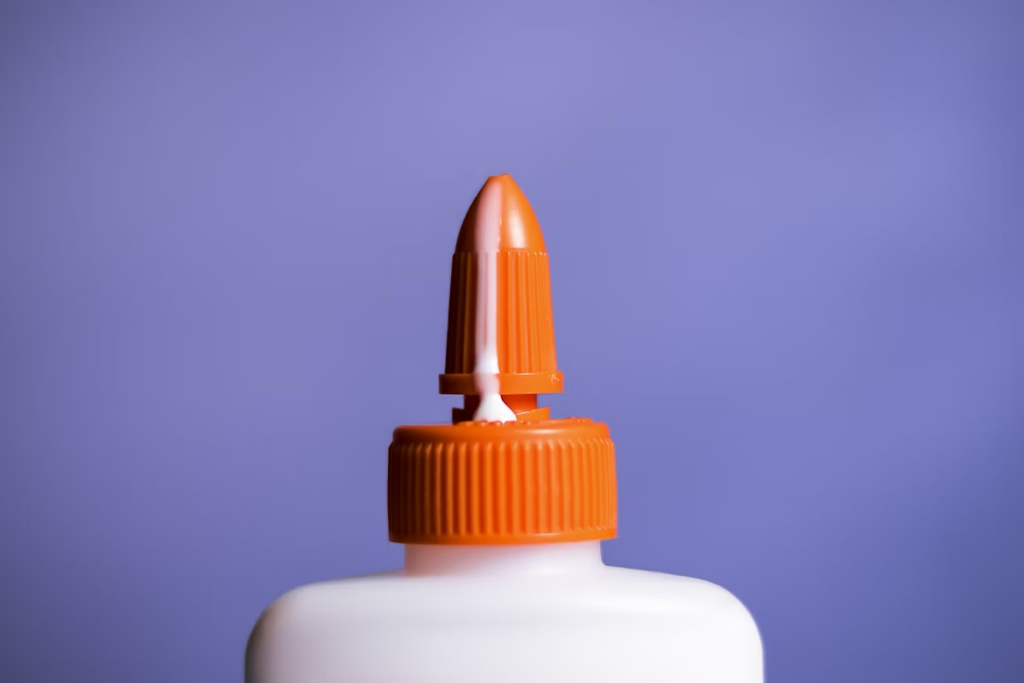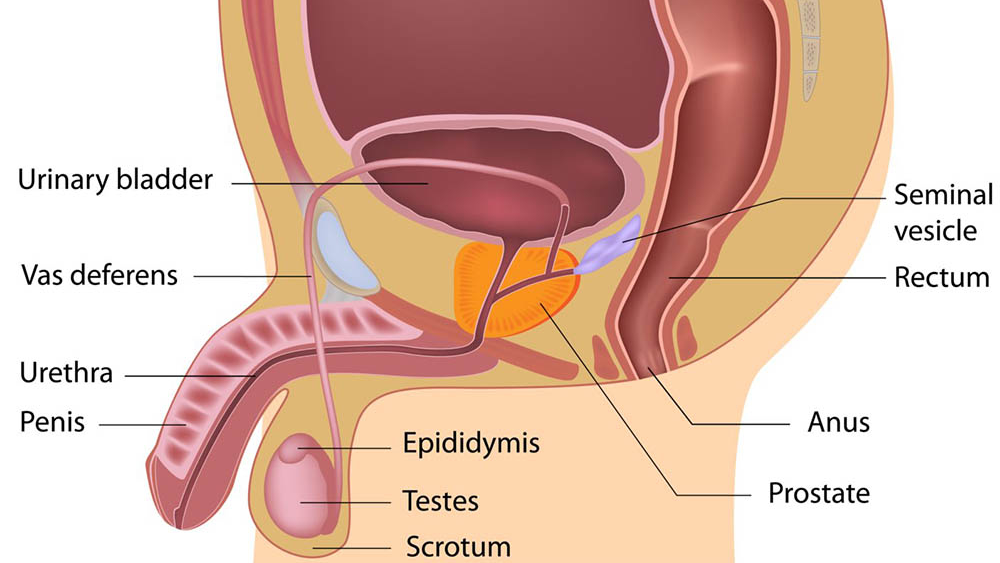Male squirting is a term that pops up more and more in conversations about sex and the body, but few people really know what it means. Is it the same thing as ejaculation? Something entirely different? And how does it show up for cis men versus trans individuals?
This article takes those questions head-on. We’ll look at what people mean when they talk about squirting, how it compares to ejaculation, what science says about where the fluid comes from, and why the experiences can be different depending on anatomy. Along the way, we’ll clear up myths, share what research actually shows, and talk about what it means for sexual health and comfort.
Table of Contents
- What Do People Mean by “Male Squirting”?
- Male Squirting vs Ejaculation: The Core Differences
- Anatomy Behind Male Squirting
- Cis Male Experiences of Squirting
- Transmasculine Experiences of Squirting
- Is Male Squirting Safe? Medical and Practical Insights
- How to Explore Male Squirting Safely (If You’re Curious)
- Common Myths About Male Squirting Debunked
- FAQs on Male Squirting
- Key Takeaways for Male Squirting
- Want More Reads?
What Do People Mean by “Male Squirting”?
Male squirting isn’t a term you’ll often see in medical textbooks, but it shows up a lot in sexual health conversations, blogs, and forums. Broadly, it describes the forceful expulsion of fluid from the urethra that happens outside of what most people think of as “normal” ejaculation. Unlike semen, the fluid is usually clear or slightly cloudy, and the sensation can feel different from climax.
Part of the confusion comes from language. In cis men, “squirting” has sometimes been written off as accidental urination, while in trans men, it’s often discussed in relation to Skene’s glands (sometimes called the “female prostate”). Because both cases involve fluid release but from different sources, the internet tends to mash them together under the same label—making it tricky to sort out what’s really happening.
Stats and facts:
- A 2020 review in the International Journal of Impotence Research found that while research on male squirting is scarce, bladder involvement has been confirmed in small Doppler ultrasound studies.
- In one French clinical study with seven cis male participants, all men who “squirted” showed bladder emptying right before or during the event, with trace amounts of prostate-specific antigen (PSA) in the fluid—linking it both to bladder and prostate activity.
- For trans men, studies on Skene’s glands show they remain functional after testosterone therapy in many cases, which means squirting and ejaculation-like release are still possible depending on anatomy and hormonal changes.
In short, when people say “male squirting,” they’re often talking about different things depending on context, but the unifying thread is the visible release of fluid that doesn’t fit neatly into the ejaculation category.
Can’t wait to get your pleasure now? Here are some remote-controlled Lovense toys!
Gush 2 – Penis Vibrator

- Powerful oscillations and vibrations
- Adjustable bands for hands-free play
- Waterproof for shower play
- Long battery life for endless stimulation
Solace Pro – AI Blowjob Machine

- Intense thrusting for targeted sensation
- 3D sleeves for maxmium pleasure
- 180° adjustable desk mount let you find the perfect angle
- Sync with video games for more fun
Male Squirting vs Ejaculation: The Core Differences

It’s easy to assume squirting and ejaculation are interchangeable, but biology says otherwise. Here’s how they differ in origin, composition, and experience.
1. Source of fluid
- Ejaculation comes from the prostate and seminal vesicles, mixing sperm and seminal plasma.
- Squirting (in cis men) has been shown to come primarily from the bladder, with studies noting a sudden release of urine-like fluid that sometimes contains PSA, linking it back to the prostate as well.
2. Fluid composition
- Ejaculate contains sperm cells, enzymes, fructose, and proteins designed for fertility.
- Squirting fluid is usually watery, with urea, creatinine, and uric acid markers similar to urine, though the PSA link suggests it’s not just urine.
3. Sensation and timing
- Ejaculation typically coincides with orgasm and involves rhythmic contractions of pelvic floor muscles.
- Squirting may occur before, during, or after orgasm, sometimes alongside ejaculation, sometimes on its own. Men often describe it as a sudden release of pressure, not always tied to climax.
4. Frequency
- Roughly 90% of cis men ejaculate during orgasm—it’s the standard biological pathway.
- Squirting is less common: small clinical studies suggest only a minority of men experience it, often through intense prostate stimulation.
Stats and facts:
- Average ejaculate volume in cis men: 2–5 mL.
- Average squirting volume reported: ranges widely, from a teaspoon to over 100 mL, depending on bladder fullness and stimulation.
- PSA (a prostate enzyme) is found in both fluids, but concentrations are far lower in squirting fluid, confirming different sources.
When lined up side by side, squirting and ejaculation aren’t competitors—they’re two distinct processes. One is directly tied to reproduction, while the other is more about pressure release and sexual response.
Anatomy Behind Male Squirting

If ejaculation is a well-mapped highway, squirting is more like a side road scientists are still figuring out. Different parts of the body team up here, which is why it doesn’t feel or look the same as semen release.
Role of the Prostate and Seminal Vesicles
The prostate’s main job is adding enzymes that help semen stay liquid, while the seminal vesicles supply sugars for energy. During squirting, the seminal vesicles don’t really take part. What researchers do find are tiny traces of prostate markers—enough to show the gland still has a hand in the process, even if it isn’t the star player.
Bladder and Urethral Involvement
The bladder is where most of the action comes from. In small ultrasound studies, doctors saw the bladder fill and then empty suddenly during squirting. Tests of the fluid found the usual urine markers—urea, creatinine, uric acid—but also a hint of prostate proteins. That mix is why it gets called squirting and not just peeing.
Pelvic Floor Muscles and Pressure Release
Anyone who’s felt their pelvic floor clench during orgasm knows those muscles are powerful. With squirting, they act like a pump, forcing the fluid out all at once. People often describe it less like the pulsing waves of ejaculation and more like a sudden “whoosh” or release.
Cis Male Experiences of Squirting

When cis men talk about squirting, it usually comes up in two settings: either in medical case studies or in personal stories shared online.
What Studies Using Doppler Ultrasound Reveal
One French study tracked seven men who said they could squirt. Ultrasound showed the same thing every time—the bladder emptied during the event. Lab tests on the fluid confirmed it wasn’t semen but still carried a little prostate-specific antigen (PSA). Translation: it’s mostly bladder fluid, with a prostate fingerprint.
How Prostate Stimulation Can Trigger Bladder Release
Plenty of men only discover squirting after experimenting with prostate massage. The pressure seems to relax the muscle that normally keeps bladder fluid locked away. Add the contractions of the pelvic floor, and the result is a sudden spray or gush. Not everyone gets it, but for those who do, prostate play is usually the trigger.
Common Misconceptions (It’s Not Just “Peeing”)
Because the fluid looks watery, squirting gets brushed off as accidental urination. But men who’ve experienced it say it doesn’t feel like peeing—they don’t get the same bladder “urge,” and the timing lines up with arousal or orgasm, not a bathroom trip. The chemical mix of the fluid backs that up.
Transmasculine Experiences of Squirting
For trans men, squirting comes from a slightly different source, but the mechanics are just as real.
Skene’s Glands as the “Female Prostate”
Everyone assigned female at birth has Skene’s glands, tiny structures near the urethra that produce a fluid almost identical to what the prostate makes. When trans men squirt, it’s usually these glands doing the work, releasing fluid into the urethra.
Impact of Hormone Therapy on Squirting Potential
Testosterone can shrink Skene’s glands, but not in every case. Imaging studies show a lot of variation—some glands stay active, some don’t. That means squirting remains possible for many trans men, especially if pelvic floor muscles are strong.
Voices from Transmasculine Communities
On forums and in interviews, trans men talk about squirting with a mix of surprise, pride, and sometimes embarrassment. For some, it feels affirming; for others, confusing. A common theme is wishing they’d been taught earlier that Skene’s glands exist and that squirting is normal, not something “wrong” with their bodies.
Is Male Squirting Safe? Medical and Practical Insights
Squirting is more surprising than dangerous, but like anything involving the body, it helps to understand what’s going on.
Hygiene and Fluid Composition (PSA, Creatinine, Trace Urine)
Lab tests show squirting fluid is mostly water from the bladder, with the same urea and creatinine you’d find in urine. What makes it different is the trace of prostate-specific antigen (PSA), a marker from prostate or Skene’s gland activity. In plain terms: yes, there’s overlap with urine, but it isn’t identical. It’s safe, though some may want a towel handy since the volume can be unpredictable.
Distinguishing Squirting from Incontinence
Incontinence is involuntary leakage that happens outside of arousal or orgasm. Squirting, by contrast, is tied to sexual activity and usually feels like a release rather than an accident. One study even noted participants could empty their bladders normally afterward, showing their bladder control was intact. That difference—arousal context, timing, and sensation—separates squirting from a medical condition.
When to Seek Medical Advice
Most squirting doesn’t signal a problem. But if it’s happening alongside pain, burning, or unexpected leakage during non-sexual activity, a urologist can rule out bladder or prostate issues. Occasional squirting during sex? Totally normal. Constant leaking outside of sex? Worth a check-up.
How to Explore Male Squirting Safely (If You’re Curious)

Squirting isn’t something you can just flip on like a switch. It depends on how the bladder, prostate or Skene’s glands, and pelvic floor work together. Exploration is safest when it’s done slowly, with intention, and with some understanding of what makes it possible.
Preparation Tips (Hydration, Relaxation, Communication)
- Hydration with timing: A moderately full bladder is key. That means drinking water 30–60 minutes before exploring, but also emptying once beforehand so you know the next release is connected to arousal, not just needing the bathroom.
- Set up the space: Waterproof sheet, towel, or even positioning near the shower removes the mental barrier of “what if I make a mess.” If the brain feels safe, the body follows more easily.
- Body relaxation: Pelvic release is hard if your core is tense. Gentle stretches or slow breathing into the lower abdomen can help soften the pelvic floor, making release possible.
- Partner check-ins: If a partner is involved, clarity matters—“this could involve fluid, it’s not harmful, are you comfortable continuing?” That avoids mid-moment panic.
Gentle Prostate or Pelvic Floor Stimulation Methods
- Prostate access: For cis men, direct prostate stimulation (via anal play or even anal sex toys like prostate massagers) is the most common trigger. A curved toy or careful manual pressure works best—pressure should feel like firm, steady presence, not jabbing.
- Pelvic floor push: Think of the subtle push you’d use to start urination, combined with sexual arousal. That bearing down is often what creates the forceful expulsion.
- Combine sensations: Prostate pressure + pelvic floor push = the highest chance of release. For trans men, Skene’s gland stimulation near the urethra or G-spot area serves a similar role.
- Recognize the “about to release” moment: Many describe a building fullness or “I might pee” sensation. That’s the sign to let go rather than clamp down. Resisting often stops the release altogether.
Consent and Comfort: Keeping Exploration Safe
- Affirm normalcy: Whether or not it happens, the body is responding normally. There’s nothing broken or wrong if it doesn’t occur.
- Stop if there’s pain or burning: That’s not squirting—it’s a signal from the body.
- No chasing the outcome: Squirting may not happen every time. If the only goal is to “prove” it can, the tension often prevents it.
Common Myths About Male Squirting Debunked
“It’s just pee” – why that’s oversimplified
Yes, bladder fluid is involved, but tests show squirting also carries prostate markers like PSA. That dual signature makes it distinct from plain urination, and the timing during arousal further separates it from incontinence.
“Only women can squirt” – inclusive anatomy reality
Cis men, trans men, and people with vaginas can all experience squirting—through different structures (prostate, Skene’s glands, bladder). Framing it as a “female-only” phenomenon erases a whole range of real experiences.
“It means something’s wrong” – why it doesn’t.
Squirting is not a sign of bladder weakness or illness. As long as there’s no pain, burning, or leakage outside of sexual activity, it’s considered a normal body response. Clinical studies confirm it’s simply another way the urinary and reproductive systems can interact during arousal.
FAQs on Male Squirting

Can all men squirt?
No. Research suggests squirting is relatively rare among cis men and more common after targeted prostate stimulation. Among trans men, it depends on Skene’s gland activity, which can vary with hormone therapy.
Is male squirting linked to orgasms?
Often, but not always. Some men squirt during orgasm, others just before or after. It doesn’t replace ejaculation—it can happen alongside it or independently.
How do doctors test the fluid?
Labs look for markers: urea and creatinine (urine), and PSA (prostate). Squirting fluid usually has a mix—bladder plus prostate.
Is it more common in trans men than cis men?
It depends on anatomy. Cis men usually need direct prostate stimulation, while trans men may squirt via Skene’s glands near the urethra. Neither group squirts “all the time,” but both can.
Can squirting damage the bladder?
There’s no evidence squirting harms the bladder. It’s essentially a release of fluid under pressure. If there’s pain, burning, or involuntary leakage outside of sex, that’s when a doctor should be consulted.
Does male squirting always involve prostate play?
Not always. Prostate stimulation is the most common trigger for cis men, but some report it after intense pelvic floor contractions or bladder pressure.
Is squirting the same thing as “peeing during sex”?
No. Incontinence happens without arousal and doesn’t carry PSA. Squirting is tied to sexual stimulation, feels different, and tests differently in labs.
How much fluid comes out during squirting?
It varies. Some release a few milliliters, others more than 100 mL. Factors include hydration, bladder fullness, and muscle contractions.
Key Takeaways for Male Squirting
Male squirting sits at the crossroads of curiosity, stigma, and science. It’s not the same as ejaculation, and it’s not just urination—it’s a distinct release that involves the bladder, prostate or Skene’s glands, and the pelvic floor working together. For cis men, it usually appears after prostate stimulation; for trans men, it often connects to Skene’s gland activity.
What matters most is recognizing it as a normal variation of sexual response. Some people experience it, some don’t. Neither outcome means anything is wrong with the body. Approaching the topic with openness, accurate information, and inclusive language helps clear away myths and gives people space to understand their experiences without shame.
In the end, squirting isn’t about proving anything—it’s simply another way the human body can respond to pleasure. Knowing the facts makes it easier to approach with curiosity, confidence, and respect.
👉 Curious about exploring prostate play or pelvic floor stimulation in a safe, supported way? Lovense offers app-controlled anal toys designed for comfort, precision, and flexibility—tools that can make learning about your body easier and more fun.
Want More Reads?
- Suction Cup Strokers – A Complete Guide to Hands-Free Male Toys
- Prostate Play Techniques: A Beginner’s Guide to Male Pleasure
- Top Techniques for Achieving a Powerful Male Anal Orgasm



